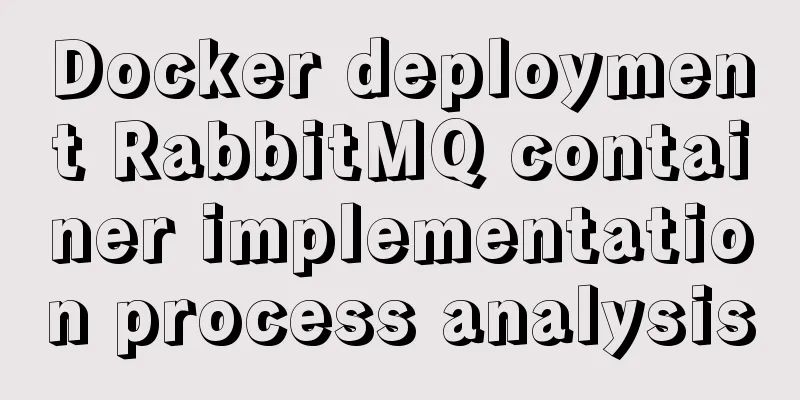Docker deployment RabbitMQ container implementation process analysis

|
1. Pull the image First, execute the following command to download the image to your local computer: Note: rabbitmq is an official image and does not come with a console. If you want to install an image with a console, you need to include a tag when pulling the image, for example: rabbitmq:management. 2. Create and mount a local data directory 3. Start the container (1) Execute the following command to instantiate the RabbitMQ service:
Parameter Description:
(2) Then execute the docker ps command to check that the RabbitMQ container has indeed run successfully:
Notice:
3. Access test Use a browser to access http://IP:15672. If you see the following page, it means RabbitMQ has been started successfully.
The above is the full content of this article. I hope it will be helpful for everyone’s study. I also hope that everyone will support 123WORDPRESS.COM. You may also be interested in:
|
<<: Ideas and codes for realizing magnifying glass effect in js
>>: MySQL master-slave synchronization, implementation principle of transaction rollback
Recommend
Implementation code for adding links to FLASH through HTML (div layer)
Today a client wants to run an advertisement, and ...
Implementing WeChat tap animation effect based on CSS3 animation attribute
Seeing the recent popular WeChat tap function, I ...
Tutorial on installing Android Studio on Ubuntu 19 and below
Based on past experience, taking notes after comp...
Detailed example of sorting function field() in MySQL
Preface In our daily development process, sorting...
Solution to ERROR 1366 when entering Chinese in MySQL
The following error occurs when entering Chinese ...
JavaScript implementation of verification code case
This article shares the specific code for JavaScr...
MySQL 5.7.19 installation tutorial under Windows 10 How to change the root password of MySQL after forgetting it
Take MySQL 5.7.19 installation as an example, fir...
Solution to Ubuntu cannot connect to the network
Effective solution for Ubuntu in virtual machine ...
Detailed explanation of Vue3's sandbox mechanism
Table of contents Preface Browser compiled versio...
The whole process of configuring reverse proxy locally through nginx
Preface Nginx is a lightweight HTTP server that u...
An Incomplete Guide to JavaScript Toolchain
Table of contents Overview Static type checking C...
Mac VMware Fusion CentOS7 configuration static IP tutorial diagram
Table of contents Install CentOS7 Configuring Sta...
Vue implements the full selection function
This article example shares the specific code of ...
Solve the problem of the container showing Exited (0) after docker run
I made a Dockerfile for openresty on centos7 and ...
How to view and set the mysql time zone
1. Check the database time zone show variables li...











